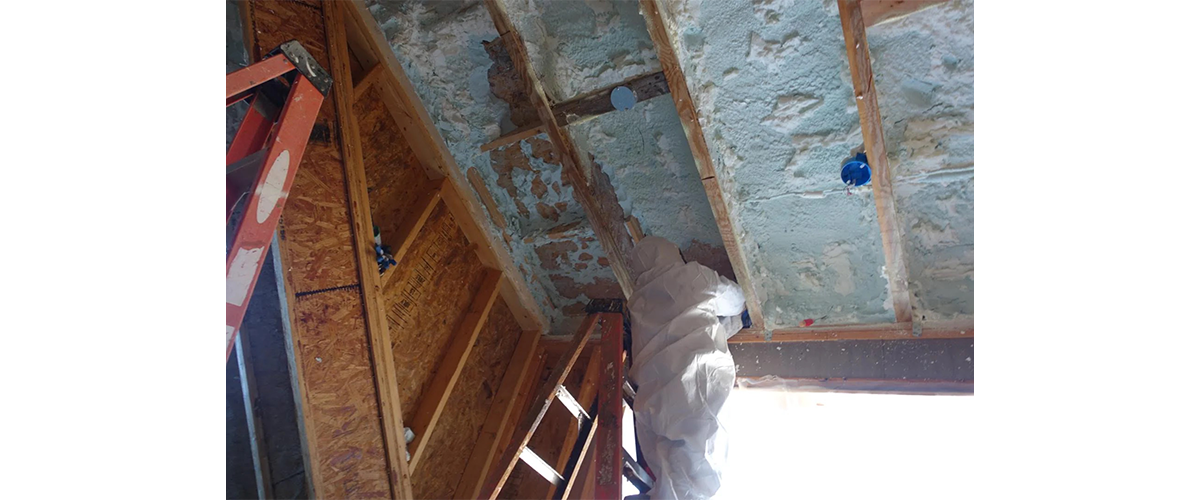
In our quest to make a less toxic world, 475 often focuses on how, today, too often professionals are insisting on filling buildings with toxic, bioaccumulative, plastic spray foam insulations. It seems obvious enough, that as we seek to limit plastic bag use and use biodegradable materials in our everyday lives - that we would also do so in the buildings we design and build. Yet there is a disconnect - as our workers, occupants and the biosphere itself continue to be under assault by spray foam.
There is much work to do, and nothing can be taken for granted. Like the insane re-emergence of polio, even something we generally think as confined to the dustbin of history, lives on like a bad zombie movie. Asbestos is such a WTF realization. Global Asbestos Awareness Week (April 1-7), gives us the opportunity to reflect on this poisonous bad actor.
The need for awareness among building professionals is beared out in numbers, as asbestos accounts for half of all occupational cancer and 10,000 Americans die annually from asbestos-related health complications, TODAY.
Risky exposure occurs when asbestos mineral fibers are inhaled or ingested, and does not necessary have to be firsthand. Secondhand exposure can occur by carrying dust home on clothing, hair, or equipment. This exposure can lead to a variety of ailments including asbestosis, pleural plaque, pneumothorax, asbestos warts, and lung cancer. All types of asbestos have at least some connection to the even more serious disease: mesothelioma. This rare type of cancer can take decades to develop with a strikingly low survival rate.
At its peak in 1973, American workers manufactured or imported 800,000 tons of asbestos for use across North America, today that number is 15,000 tons.
In 1976 the EPA passed the Toxic Substances Control Act which regulated asbestos use, but the move to ban asbestos outright in 1989 through an amendment to that act was overturned after the rule was vacated and remanded by the Fifth Circuit Court of Appeals in 1991. This is why products on the shelf today may still contain small amounts of asbestos legally. Included on the list of products are some caulks & adhesives, cable insulation, tiles, siding, vinyl, cement and insulation. More info on products containing asbestos can be found here.
There are 6 naturally occurring types of asbestos, each named for their base silicate mineral:
- Amosite (brown)
- Chrysotile (most common)
- Tremolite (off-white to dark green)
- Crocidolite (blue)
- Anthophyllite (a.k.a. brown asbestos)
- Actinolite (white to dark brown)
Asbestos has deep roots in New York City. The industry began here in the 1850s, not far from 475 HQ, when Henry Ward Johns (the namesake of Johns-Manville Corporation) began marketing the material for its fire resistance, long-term durability, and affordability. Johns sourced materials from the talc mines found in parts of Upstate New York along the Vermont and Canada borders, where we find some of the highest rates of mesothelioma today.
With the rise of spray-on insulation products in the 1960s, the W.R. Grace Corporation developed Monokote® spray-on insulation containing up to 50% asbestos. (This product is still on the shelf today, but asbestos mix was tapered down to 1% by 2007, and completely replaced with other minerals such as gypsum, to serve as flame retardant.) Over 400 tons of the asbestos-based Monokote® was used to cover the envelope of the Twin Towers buildings during construction. When the towers collapsed in the 9/11 terrorist attacks, it lead to one of the single biggest exposure events in history. “The World Trade Center Health Registry estimates about 410,000 people were exposed to a host of toxins including asbestos during the rescue, recovery and clean-up efforts that followed 9/11.” (source)

The lessons of asbestos have not yet sunk in. Maybe that’s why we can collectively tolerate spray foam so widely. Now, the list of asbestos abatement methods includes covering the risk areas in spray foam to lock it in. We could not think of a worse treatment, simultaneously locking in the toxin for a future generation to take care of, and coating it in the next in line to be banned and systematically removed from buildings.
Sources:
https://www.epa.gov/asbestos/us-federal-bans-asbestos/
https://www.mesothelioma.com/asbestos-exposure/
https://www.asbestos.com/world-trade-center/
http://www.asbestosdiseaseawareness.org/
https://mesothelioma.net/




